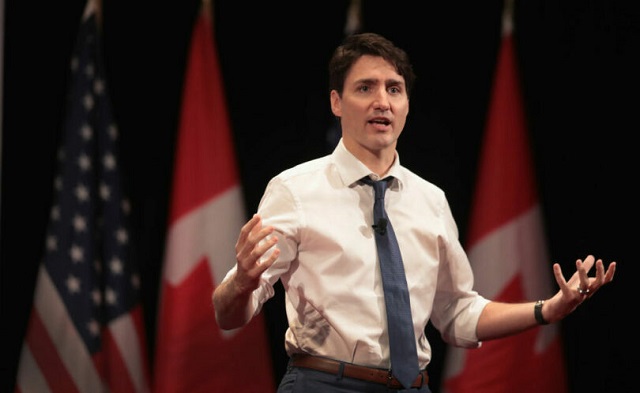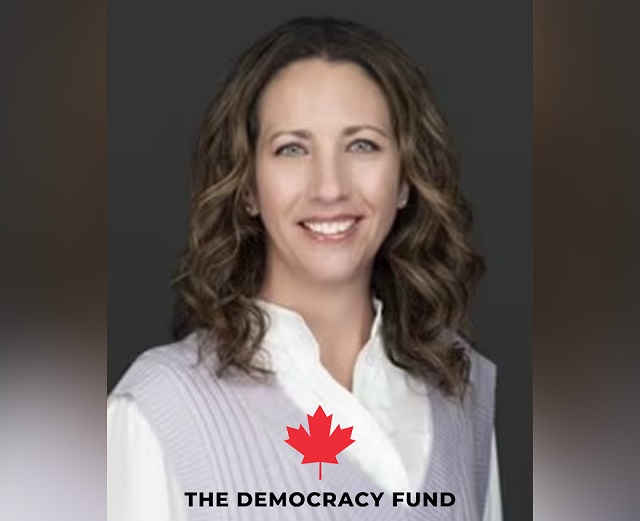Indigenous
B.C.’s plan to ‘reconcile’ by giving First Nations a veto on land use
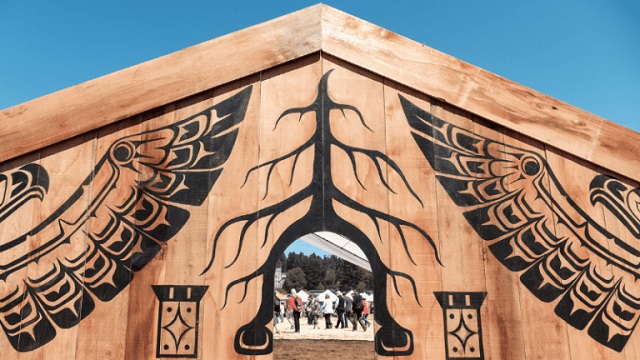
From the MacDonald Laurier Institute
By Bruce Pardy
UNDRIP-inspired land law reforms are poised to turn province into an untenable host for mining, forestry and much more.
We live in strange times. A new generation of political leaders seems determined to cripple their own societies. Prime Minister Justin Trudeau, of course, comes to mind. But in Canada, he is not alone. In British Columbia, NDP Premier David Eby is preparing to bring his province to its knees.
The B.C. government plans to share management of Crown land with First Nations. The scheme will apply not to limited sections of public land here and there, but across the province. The government quietly opened public consultations on the proposal last week. According to the scant materials, the government will amend the B.C. Land Act to incorporate agreements with Indigenous governing bodies.
These agreements will empower B.C.’s hundreds of First Nations to make joint decisions with the minister responsible for the Land Act, the main law under which the provincial government grants leases, licences, permits and rights-of-way over Crown land. That means that First Nations will have a veto over how most of B.C. is used. Joint management can be expected to apply to mining, hydro projects, farming, forestry, docks and communication towers, just to start. Activities at the heart of B.C.’s economy will be at risk.
In 2007, the United Nations General Assembly adopted the Declaration on the Rights of Indigenous Peoples (UNDRIP). UNDRIP states, among other things, that Indigenous people own the land and resources of the countries in which they live. They have “the right to the lands, territories and resources which they have traditionally owned, occupied or otherwise used or acquired … to own, use, develop and control.”
At the time, Canada sensibly voted “no,” along with the United States, Australia and New Zealand. Eleven countries abstained. In 2016, Trudeau’s government reversed Canada’s objection.
As a General Assembly declaration, UNDRIP is not binding in international law nor enforceable in domestic courts. But in 2019, under the leadership of Eby’s predecessor John Horgan, the B.C. legislature passed Bill 41, the Declaration on the Rights of Indigenous Peoples Act. The act requires the government of B.C. to “take all measures necessary to ensure the laws of British Columbia are consistent with the Declaration.” Eby’s joint management plan is the next step in this project.
Long before UNDRIP, the Supreme Court of Canada created a constitutional “duty to consult” with Aboriginal peoples. The court said that the “honour of the Crown” governs the relationship between the government and Aboriginal people. The Crown’s fiduciary duties include a duty to consult whenever proposed action may adversely affect established or asserted Aboriginal rights under Section 35 of the Constitution. This duty is notoriously uncertain, onerous and time-consuming. It has become an albatross around the neck of the Canadian resource industry. The courts seem unable to specify what the duty to consult requires, except after the fact.
Now, the B.C. government aims to make things even more unpredictable. Whatever the contours of the right to be consulted, the Supreme Court at least has been clear that it does not constitute a veto. Eby will create one.
Shortly before the B.C. legislature passed Bill 41 in November 2019, the Continuing Legal Education Society of British Columbia sponsored an Aboriginal Law Conference featuring several Indigenous proponents of the bill. They promised that the new law would render the province unrecognizable.
It will “set up a whole new norm,“ “give teeth to (UNDRIP),” and move the province away, if “not fully,” from the Westminster model of governance. The veto to be conferred on Indigenous interest groups, they said, will mean that “consent will not be given very often, if at all.”
“We’re not talking small changes; we’re talking big changes,” one speaker suggested, adding that money provided by the government so far hasn’t been enough.
“Compensation for sacred sites, for lands taken, for relocation … it’s going to be an overwhelming number of compensation claims … and so I’m hoping that the province is ready for that…. Life (in B.C.) can and will change.”
For many, it is likely to change for the worse. B.C. could become an untenable host for land-based, resource-related enterprise. Impenetrable layers of red tape would entangle applications for leases and licenses. The price for First Nations approvals could be an increasing share of royalties and kickbacks, without which consent will be refused. Both governments and First Nations will siphon an ever-larger piece of a shrinking pie.
The government’s timeline is short. Written submissions will be accepted until the end of March, and anyone giving feedback will be limited by how little information the B.C. government has offered in the consultation. Bureaucrats will begin drafting amendments to the Land Act in early February, and the government plans to introduce a bill in April or May.
If you are feeling grateful not to live in B.C., don’t count your chickens. In 2021, Parliament passed its own version of B.C.’s Bill 41, the federal United Nations Declaration on the Rights of Indigenous Peoples Act. It requires the federal government to “take all measures necessary to ensure that the laws of Canada are consistent with the Declaration.” An action plan outlining more than 100 specific measures was released in 2023.
In a speech to the B.C. Business Council in 2016, I argued that our leaders could not do a better job of preventing Canadian business from succeeding in the global economy. I underestimated them. Their determination and ingenuity know no bounds.
Bruce Pardy is executive director of Rights Probe, professor of law at Queen’s University, and senior fellow with the Macdonald-Laurier Institute.
Frontier Centre for Public Policy
The Smallwood solution

From the Frontier Centre for Public Policy
All Canadians deserve decent housing, and indigenous people have exactly the same legal right to house ownership, or home rental, as any other Canadian. That legal right is zero.
$875,000 for every indigenous man, woman and child living in a rural First Nations community. That is approximately what Canadian taxpayers will have to pay if a report commissioned by the Assembly of First Nations (AFN) is accepted. According to the report 349 billion dollars is needed to provide the housing and infrastructure required for the approximately 400,000 status Indians still living in Canada’s 635 or so First Nations communities. ($349,000,000,000 divided by 400,000 = ~$875,000).
St Theresa Point First Nation is typical of many of such communities. It is a remote First Nation community in northern Manitoba. CBC recently did a story about it. One person interviewed was Christina Wood, who lives in a deteriorating house with 23 family members. Most other people in the community live in similar squalor. Nobody in the community has purchased their own house, and all rely on the federal government to provide housing for them. Few people in the community have paid employment. Those that do have salaries that come in one way or another from the taxpayer.
But St. Theresa Point is a growing community in the sense that birth rates are high, and few people have the skills or motivation needed to be successfully employed in Winnipeg, or other job centres. Social pathologies, such as alcohol and other drug addictions are rampant in the community. Suicide rates are high.
St. Theresa Point is one of hundreds of such indigenous communities in Canada. This is not to say that all such First Nations communities are poor. In fact, some are wealthy. Those lucky enough to be located in or near Vancouver, for example, located next to oil and gas, or on a diamond mine do very well. Some, like Chief Clarence Louis’ Osoyoos community have successfully taken advantage of geography and opportunity and created successful places where employed residents live rich lives.
Unfortunately, most are not like that. They look a lot more like St. Theresa Point. And the AFN now says that 350 billion dollars are needed to keep those communities going.
Meanwhile, all of Canada is in the grip of a serious housing crisis. There are many causes for this, including the massive increase in new immigrants, foreign students and asylum seekers, all of whom have to live somewhere. There are various proposals being considered to respond to this problem. None of those plans come anywhere near to suggesting that $875,000 of public funds should be spent on every Canadian man, woman or child who needs housing. The public treasury would not sustain such an assault.
All Canadians deserve decent housing, and indigenous people have exactly the same legal right to house ownership, or home rental, as any other Canadian. That legal right is zero. Our constitution does not give Canadians – indigenous or non-indigenous- any legal right to publicly funded home ownership, or any right to publicly funded rental property. And no treaty even mentions housing. In all cases it is assumed that Canadians – indigenous and non-indigenous – will provide for themselves. This is the brutal reality. We are on our own when it comes to housing. There are government programs that assist low income people to buy or rent homes, but they are quite limited, and depend on a person qualifying in various ways.
But indigenous people do not have any preferred right to housing. The chiefs and treaty commissioners who signed the treaties expected indigenous people to provide for their own housing in exactly the same way that all other Canadians were expected to provide for their own housing. In fact, the treaty makers, chiefs and treaty commissioners – assumed that indigenous people would support themselves just like every other Canadian. There was no such thing as welfare then.
Our leaders today face difficult decisions about how to spend limited public funds to try and help struggling Canadians find adequate housing in which to raise their families, and get to and from their places of employment. Indigenous Canadians deserve exactly as much help in this regard as everyone else. Finding sensible, affordable ways to do this is vitally important if Canada is to thrive.
And one of hundreds of these difficult and expensive housing decisions our leaders must deal with now is how to respond to this new demand for 350 billion dollars – a demand that would result in indigenous Canadians receiving hundreds of times more housing help than other Canadians.
Our leaders know that authorising massive spending like that in uneconomic communities is completely unfair to other Canadians – for one thing doing so means that there would be no money left for urban housing assistance. They also know that pouring massive amounts of money into uneconomic, dysfunctional communities like St. Theresa’s Point – the “unguarded concentration camps” Farley Mowat described long ago- only keeps generations of young indigenous people locked in hopeless dependency.
In short, they know that the 350 billion dollar demand makes no sense.
Our leaders know that, but they won’t say that. In fact it is not hard to predict how politicians will respond to the 350 billion dollar demand. None of their responses will look even remotely like what I have written above. Instead, they will say soothing things, while pushing the enormous problem down the road. Eventually, when forced by circumstances to actually make spending decisions they will provide stopgap “bandage” funding. And perhaps come up with pretend “loan guarantee” schemes – loans they know will never be repaid. Massive loan defaults in the future will be an enormous problem for our children and grandchildren. But today’s leaders will be gone by then.
So, in a decade or so communities, like St. Theresa Point, will still be there. Any new housing that has been built will already be deteriorating and inadequate. The communities will remain dependent. The young people will be trapped in hopeless dependency.
And the chiefs will be making new money demands.
At some point this country will have to confront the reality that most of Canada’s First Nations reserves, particularly the remote ones, are not sustainable. Better plans to educate and provide job skills to the younger generations in those communities, and assist them to move to job centres, will have to be found. Continuing to pretend that this massive problem will sort itself out by passing UNDRIP legislation, or pretending that those depressed communities are “nations” is only delaying the inevitable.
When Joey Smallwood told the Newfoundland fishermen, who had lived in their outports for generations, that they must move for their own good, there was much pain. But the communities could no longer support themselves, and it had to be done. Entire communities moved. It worked out.
The northern First Nations communities are no different. The ancestors of the residents of those communities supported themselves by fishing and hunting. It was an honourable life. But it is gone. The young people there now will have to move, build new lives, and become self-supporting like their ancestors.
Brian Giesbrecht, retired judge, is a Senior Fellow at the Frontier Centre for Public Policy
Energy
Canada’s Indigenous Peoples Eye Big Energy Deals, Await Trudeau Loan Promise
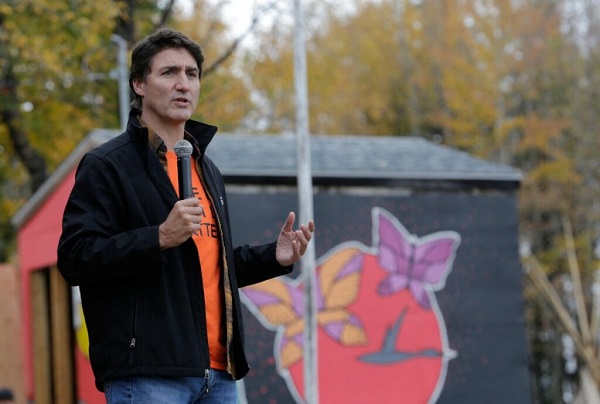
From EnergyNow.ca
By Rod Nickel, Nivedita Balu, and Alistair Bell
Trudeau’s government will release its budget April 16 and has said it will include plans to guarantee loans for Indigenous communities investing in major resource projects.
Canada’s First Nations are eyeing their biggest opportunities yet to invest in multi-billion-dollar energy projects from pipelines to power lines, hinging on Prime Minister Justin Trudeau keeping a promise this spring to make the deals easier to finance.
Trudeau’s government will release its budget April 16 and has said it will include plans to guarantee loans for Indigenous communities investing in major resource projects.
The government, which is trying to cut greenhouse gas emissions, has not said whether oil and gas projects will be included but if they are then they would represent some of the biggest Indigenous investment opportunities, from the government-owned Trans Mountain oil pipeline to TC Energy’s Coastal GasLink pipeline.
At least 38 Canadian energy projects were announced with Indigenous investment between 2022 and 2024, ranging in value from C$13 million to C$14.5 billion ($10.69 billion), according to the Fasken law firm, which has worked on some of the projects.
Enbridge is willing to sell Indigenous stakes in all types of assets, including North America’s biggest oil pipeline network, the Mainline, said executive vice-president of liquids Colin Gruending, adding that a Mainline deal would be complex because it crosses the Canada-U.S. border.
“Being open to all forms of energy, I think that’s important,” Gruending said of the federal guarantee. “If we’re going to involve more nations quicker, we need to open it up.”
The federal government will update next steps for a loan guarantee program in its budget, said Katherine Cuplinskas, spokesperson for the finance minister. She did not answer questions about the program’s dollar value or whether it would include oil and gas projects.
For energy companies, Indigenous partnerships provide capital infusions and a way to speed projects through approval from provincial governments that in some cases require First Nations equity.
A federal loan guarantee would allow First Nations to borrow at favorable rates, enabling them to profit, said Niilo Edwards, CEO of First Nations Major Projects Coalition, an Indigenous-owned organization that is advising First Nations on 17 projects worth a combined C$40 billion.
“A lot of (First Nations) are presented major investment opportunities that may be in the hundreds of millions of dollars and just don’t have the capital themselves,” Edwards said.
Alberta, Saskatchewan and Ontario offer provincial guarantees and British Columbia is developing one.
Banks already profit from advising and lending to First Nations and energy companies on deals but are eager for a federal guarantee to free up capital on a bigger scale.
“Provincial/federal loan guarantee programs with clear parameters could create a powerful force for accelerating capital into Indigenous-led projects,” said Michael Bonner, head of Canadian business banking at Bank of Montreal.
Many recent First Nations resource deals involve electricity and renewable energy.
BC Hydro is talking with an Indigenous coalition about buying 50% of its northwest transmission line expansion.
Wind and solar deals are also happening, such as Greenwood Sustainable Infrastructure’s C$200-million solar farm in Saskatchewan, announced in January, which will be at least 10% owned by Ocean Man First Nation.
Spain-based EDP Renewables, which built an Ontario wind farm in 2021 with 50.01% ownership by Piwakanagan First Nation, has multiple Canadian projects under development and is looking for more.
With First Nations knowledge and support, projects advance faster, said EDP North American CEO Sandhya Ganapathy. “Canada is super-high on our radar.”
(Reporting by Rod Nickel in Winnipeg, Manitoba and Nivedita Balu in Toronto Editing by Alistair Bell)
-

 conflict2 days ago
conflict2 days agoCol. Douglas Macgregor torches Trump over support for bill funding wars in Ukraine and Israel
-

 Censorship Industrial Complex1 day ago
Censorship Industrial Complex1 day agoNow We Are Supposed to Cheer Government Surveillance?
-

 Alberta1 day ago
Alberta1 day agoRed Deer Doctor critical of Alberta’s COVID response to submit report to Danielle Smith this May
-
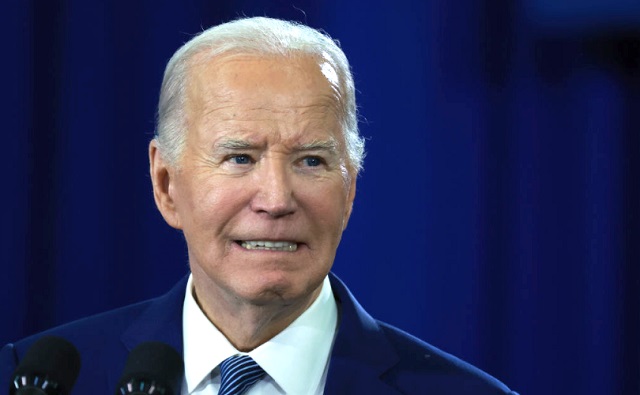
 International2 days ago
International2 days agoBiden admin expands Title IX to include ‘gender identity,’ sparking conservative backlash
-

 Business13 hours ago
Business13 hours agoTaxpayers criticize Trudeau and Ford for Honda deal
-

 Alberta2 days ago
Alberta2 days agoAlberta’s baby name superstar steals the show again
-

 Uncategorized2 days ago
Uncategorized2 days agoThe end of Canada: The shift from democracy to totalitarian behavior in the ‘pandemic era’
-

 Business17 hours ago
Business17 hours agoDon’t be fooled by high-speed rail




